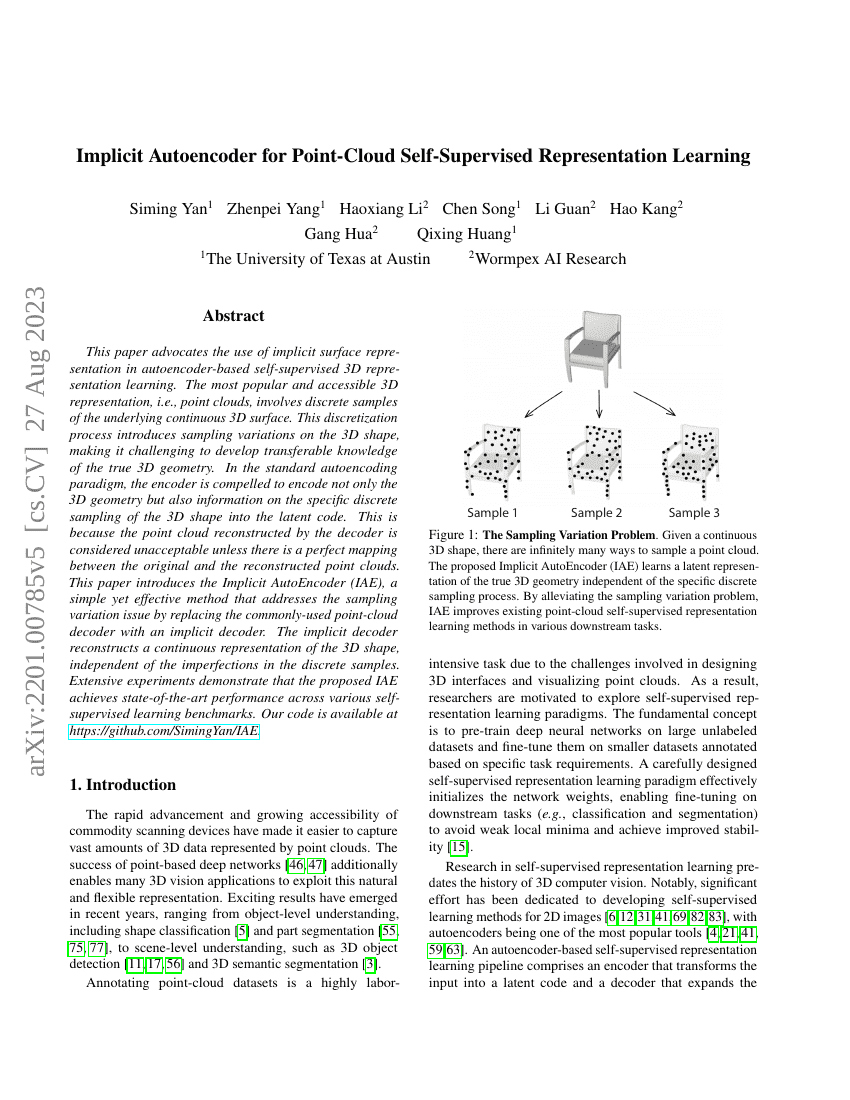Command Palette
Search for a command to run...
Implicit Autoencoder for Point-Cloud Self-Supervised Representation Learning
Yan Siming ; Yang Zhenpei ; Li Haoxiang ; Song Chen ; Guan Li ; Kang Hao ; Hua Gang ; Huang Qixing

Abstract
This paper advocates the use of implicit surface representation inautoencoder-based self-supervised 3D representation learning. The most popularand accessible 3D representation, i.e., point clouds, involves discrete samplesof the underlying continuous 3D surface. This discretization process introducessampling variations on the 3D shape, making it challenging to developtransferable knowledge of the true 3D geometry. In the standard autoencodingparadigm, the encoder is compelled to encode not only the 3D geometry but alsoinformation on the specific discrete sampling of the 3D shape into the latentcode. This is because the point cloud reconstructed by the decoder isconsidered unacceptable unless there is a perfect mapping between the originaland the reconstructed point clouds. This paper introduces the ImplicitAutoEncoder (IAE), a simple yet effective method that addresses the samplingvariation issue by replacing the commonly-used point-cloud decoder with animplicit decoder. The implicit decoder reconstructs a continuous representationof the 3D shape, independent of the imperfections in the discrete samples.Extensive experiments demonstrate that the proposed IAE achievesstate-of-the-art performance across various self-supervised learningbenchmarks.
Code Repositories
Benchmarks
| Benchmark | Methodology | Metrics |
|---|---|---|
| 3d-point-cloud-classification-on-modelnet40 | IAE + DGCNN | Mean Accuracy: 91.6 Overall Accuracy: 94.2 |
| 3d-point-cloud-linear-classification-on | IAE (DGCNN) | Overall Accuracy: 92.1 |
Build AI with AI
From idea to launch — accelerate your AI development with free AI co-coding, out-of-the-box environment and best price of GPUs.